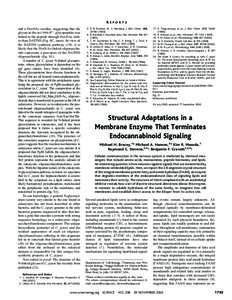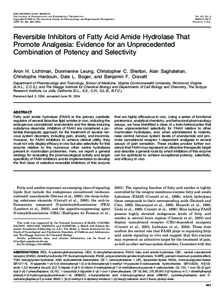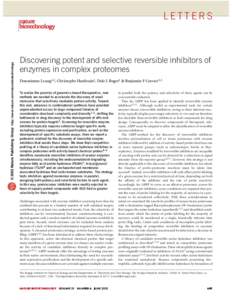<--- Back to Details
| First Page | Document Content | |
|---|---|---|
 Date: 2008-05-12 15:27:39Chemistry Biology Biochemistry Membrane biology Cannabinoids Neurotransmitters Fatty acid amide hydrolase Substrate Methoxy arachidonyl fluorophosphonate Anandamide Cell membrane Amino acid |
Add to Reading List |
 REPORTS and a HexNAc residue, suggesting that the glycan in the m/z⫹ glycopeptide was linked to the peptide through HexNAc rather than DATDH (Fig. 4C, inset). In view of the DATDH synthesis pathway (19), it is l
REPORTS and a HexNAc residue, suggesting that the glycan in the m/z⫹ glycopeptide was linked to the peptide through HexNAc rather than DATDH (Fig. 4C, inset). In view of the DATDH synthesis pathway (19), it is l
